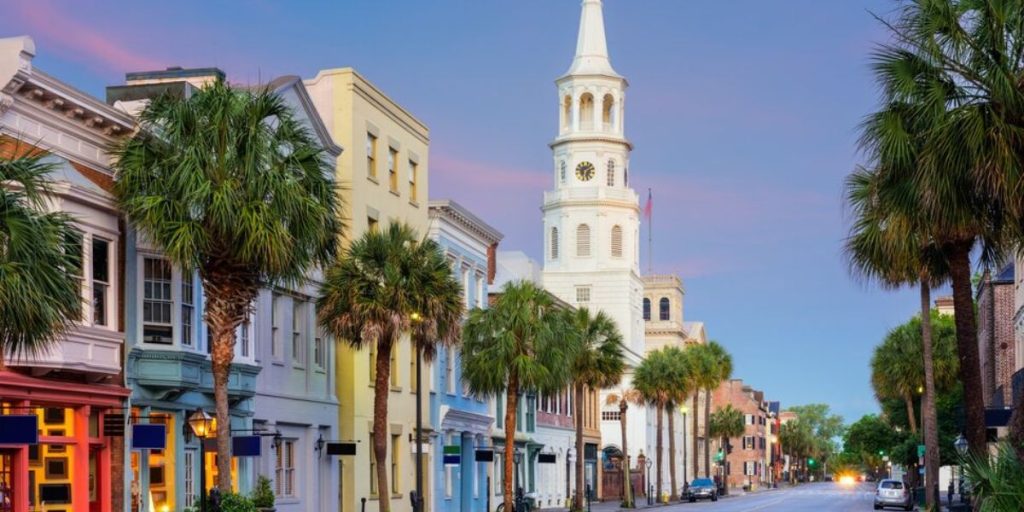South Carolina features a variety of towns, each showcasing its own distinct traits. Nonetheless, in spite of the increasing population and economic progress in the state, certain towns are encountering considerable obstacles that result in a decrease in population. This piece delves into five towns facing significant departures, highlighting the root causes and their effects on the local community.
Orangeburg
Orangeburg, commonly called “The Garden City,” is celebrated for its stunning Edisto Memorial Gardens and the lively South Carolina State University. In spite of these appealing features, Orangeburg is experiencing a concerning pattern of residents departing.
From 2010 to 2020, Orangeburg experienced a population decline of about 6%, dropping from 13,964 to 13,196. This decrease stands in stark contrast to the prevailing growth trend observed in South Carolina.
Orangeburg is grappling with serious economic difficulties, highlighted by an unemployment rate of 8.2%, which stands in stark contrast to the national average of 3.6%. The average income for households in the city stands at $30,847, significantly lower than the national average of $68,703.
Orangeburg is experiencing significant challenges with crime, reporting a violent crime rate of 8.5 per 1,000 residents, which is considerably above the national average of 4.0. The education system faces challenges, as just 79% of high school students manage to graduate on schedule.
Bennettsville
Bennettsville, the heart of Marlboro County, boasts a deep historical legacy and a delightful southern allure. Nonetheless, there has been a consistent decrease in its population.
Bennettsville experienced a 10% decline in population, dropping from 9,069 in 2010 to 8,072 in 2020. This drop is concerning considering the overall increase in the state’s population.
Bennettsville faces significant economic hurdles, highlighted by an unemployment rate of 7.5% and a median household income of $27,830. The numbers are notably lower than the national averages, highlighting the town’s economic challenges.
Bennettsville is facing significant challenges, as the violent crime rate stands at 7.2 per 1,000 residents. The level of educational achievement remains concerning, as merely 72% of the population holds a high school diploma.
Marion
Marion, with its charming historic architecture and picturesque downtown, has faced the same hurdles as many small towns in South Carolina.
Between 2010 and 2020, Marion experienced a population decline of 8%, decreasing from 6,939 to 6,377 residents. This decrease reflects a larger pattern impacting rural communities across the state.
Marion is facing significant economic challenges, highlighted by an unemployment rate of 9.1% and a median household income of $26,570. The community faces challenges in drawing in fresh enterprises and sectors.
Marion is experiencing a significant level of crime, reporting a violent crime rate of 7.8 incidents for every 1,000 residents. Challenges persist within the education system, as just 75% of high school students manage to graduate on schedule.
Gaffney

Gaffney, famous for its distinctive Peachoid water tower and vibrant history, is experiencing a decrease in population despite its appealing features.
Gaffney experienced a population decline of 5%, dropping from 12,414 in 2010 to 11,422 in 2020. This drop raises alarms for a community rich in history.
In Gaffney, the unemployment rate is currently recorded at 7.9%, while the median household income is noted to be $32,384. The town’s population is dwindling due to these economic hurdles.
Read More: Tongue Twisters: Most Mispronounced Locations in South Carolina; See If Your Pronunciation Matches!
Gaffney experiences a crime rate that surpasses the national average, reporting a violent crime rate of 7.0 incidents for every 1,000 residents. The education system is encountering challenges, as evidenced by a high school graduation rate of 76%.
Allendale
Allendale, a quaint town located in the southern region of the state, is witnessing a notable departure of its residents.
Allendale experienced a population decline of 12%, decreasing from 3,482 in 2010 to 3,058 in 2020. This significant drop ranks among the most severe in the region.
Allendale is facing a challenging economic landscape, characterized by an unemployment rate of 11.2% and a median household income of $23,250. The data underscores the town’s financial challenges.
Allendale is facing significant challenges, as the violent crime rate stands at 9.0 per 1,000 residents. The education system faces challenges, as just 68% of residents hold a high school diploma.
Final Thoughts
The decrease in residents in these South Carolina towns is a multifaceted problem influenced by economic difficulties, elevated crime levels, and deficiencies in education. Solving these issues demands a united approach from local authorities, enterprises, and the community at large.
Despite the considerable challenges these towns encounter, there exists an opportunity for renewal through focused economic initiatives, strategies to reduce crime, and enhancements in education. By addressing the core challenges and putting in place impactful strategies, these communities can strive to turn the tide and draw in new inhabitants.